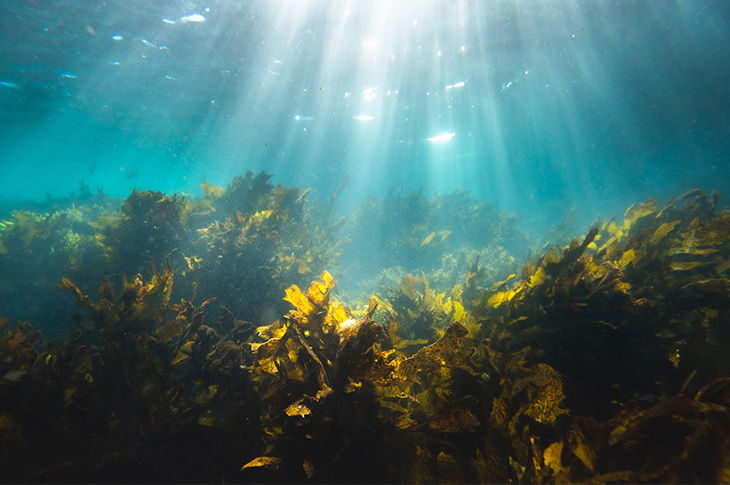“Eat your veggies!” That’s a classic piece of nutritional advice you’ve probably heard since you were a kid. But what about “eat your sea veggies”? For thousands of years coastal communities in Japan, Scandinavia, Ireland, and Scotland and the islands of the Pacific and Caribbean have been eating these tasty seaweeds and coastal marsh succulents.
Prized by chefs for their rich briney flavors, kelps are popular in hearty dashi broths like ramen and miso. Sea beans can be added to stir fries or lightly sauteed with butter and herbs. Dulse, an attractive red leafy seaweed, makes a wonderful salad or side vegetable—and, when dried, the powder has a “bacon-like” flavor. Nori is another red leafy seaweed which is dried and used to wrap sushi and other food for a brackish-edible casing.
For these traditional diets, sea vegetables are celebrated for their nutrition. They are low in fat, rich in fiber, essential vitamins, and minerals.
Good for you sea veggies
Sea vegetables are nutritious, explains Elliott Torsney, registered dietitian nutritionist, RDN, and certified diabetes educator. “They’re rich in essential vitamins, minerals, and iodine,” he says.
Torsney highlighted additional nutrition benefits of sea vegetables:
Rich in vitamins A, C, E, and K, all essential nutrients to help the body function properlyA good source of folate, zinc, sodium, calcium, and magnesiumHigh in dietary fiber, especially soluble fiber known for its glycemic effects on blood sugars
If you’re looking for food that’s not only good for you but also good for the planet, sea greens fit the bill.
They have a smaller carbon footprint than land vegetables, are low waste, and are easy to grow.
That said, it is important to note that since sea vegetables contain such a rich source of iodine, consider your overall sources of iodine (e.g. iodized salt, fish and seafood, dairy products) so as not to consume too much. Excess iodine can cause metabolic imbalances.
Exploring the variety of sea vegetables
“Sea greens” aren’t only green, explains registered dietitian Jenna Volpe. These veggies can be found in red, brown, yellow, or even pink colors. They’re often referred to as seaweed, Volpe adds. “Some different examples of edible sea greens include nori, kelp, kombu, wakame, dulse, and Irish moss.”
And while many people may be unfamiliar with the algae by name, many have had some at some point. For example, miso soup contains wakame seaweed, and many sushi rolls are wrapped with nori.
Different sea vegetables have subtle flavor differences. Sea lettuce, like land lettuce, is mild and neutral, while arame is slightly sweet. The key is to explore and find the texture and flavor you like.
Like many vegetables, sea greens can be simple to prepare. Enjoy them raw in salads or smoothies, or saute or stir fry them separately or in a meal. While some specialty and online stores carry fresh seaweed, grocery chains have begun stocking dried and powdered sea greens and sea green products (i.e., roasted snacks).
Volpe suggests more ways to incorporate the nutritional benefits of sea greens into the diet:
Add dried sea greens into saladsEat or make sushi weekly or several times a month to have noriSprinkle dried kelp flakes into mealsSnack on mineral-dense nori “seaweed sticks”Add powdered sea greens into smoothies
Scientists have tested sea vegetables from all over the world for heavy metals and other contaminants, and everywhere they consistently find that most species contain lead, cadmium, and arsenic. The majority of seaweed products on the market today likely contain traces of one or all three of these metals. Levels may vary between species, but even within the same species they differ depending on local factors such as temperature, salinity, water acidity, and influence from rivers, human populations, and pollution from industry.
Sea vegetables are a tasty, easy way to enhance the variety of vegetables in your diet. Try adding some to your plate (or cup) today, and absorb the benefits of this nutritional powerhouse from the sea.
The post Good for You and the Planet: The Truth About Sea Veggies appeared first on Fitbit Blog.
